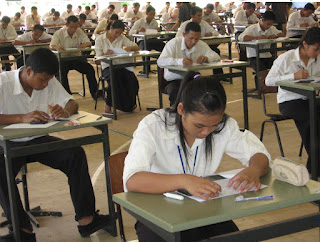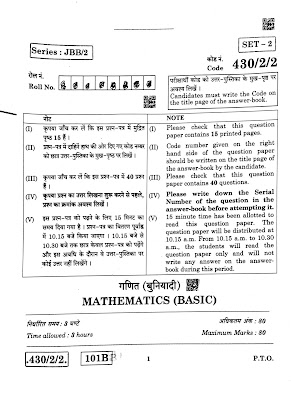CLASS 10 (CBSE BOARD) CHAPTER 1 REAL NUMBERS
INTRODUCTION: Real number is the collection of rational and irrational numbers. It is denoted by R.
RATIONAL NUMBER: Rational number is a number that can be expressed as in the form of p/q, where p &q are some integers and q ≠ 0. It is denoted by Q.
· Every integer is a rational number.
· Every rational number can be expressed as a decimal.
IRRATIONAL NUMBER: Numbers that are not rational are called irrational numbers. It cannot be represented as a simple fraction (p/q).
· Decimals never repeat.
· Decimals never end.
Euclid`s Algorithm for HCF: Euclid, a Greek mathematician derived an interesting method to find the HCF of two numbers. This simply states, any positive integer a can be divided by another positive integer b in such a way that it leaves a remainder r that is smaller than b.
Euclid`s Division Lemma: Given positive integer a and b , there exist unique integers q and r satisfying a=bq+r , 0≤r<b.
S0, let us state Euclid`s Division Algorithm clearly. Steps taken to find the HCF of two numbers , follow the steps below:
Step1.
Identify the greater number of the two.
Step2.
Consider the greater number as dividend and the smaller one as divisor.
Step3. Find
the quotient and the remainder.
Step4. If
the remainder is zero, then the divisor is the required HCF, otherwise go to
the next step.
Step5. Take
the remainder as the new divisor and the divisor as the new dividend.
Step6.
Repeat steps 3,4 and 5 till the remainder zero is obtained. The last divisor,
for which the remainder is zero, is the required HCF.
Example: use
Euclid`s algorithm to find the HCF of 4052 and 12576.
Solution:
since
12576>4052, we apply the Euclid`s division lemma a=bq+r, we get
12576=4052*3+420
4052=420*9+272
420=272*1+148
272=148*1+124
148=124*1+24
124=24*5+4
24=4*6+0
Since, the divisor is 4 when remainder becomes 0
Therefore, required HCF of 12576 and 4052 is 4(answer).
FUNDAMENTAL THEOREM OF ARITHMETIC: Every composite number can be expressed as a product of primes, and this factorization is unique in which the prime factors occur.
Composite number = product of primes.
Prime number: A number is called a prime number if it has no factor other than 1 and the number itself. Example: 2, 3,5,7,11,13 etc.
Composite number: A number is called a composite number if it has atleast one factor other than 1 and the number itself. Example: 4,6,8,9,12,14,15 etc.
Some important:
1.
Number 1 is
neither prime nor composite.
2.
The
smallest prime number is 2.
3.
All even
numbers are prime except 2.
4.
If a number
is not divisible by any one of the primes less than half of it, then it is
prime , otherwise it is composite.
Highest common factor (HCF): The HCF of two or more numbers is the greatest among common factors. In other words, the HCF of two or more numbers that divides all the given numbers exactly. It is also called greatest common divisor (GCD).
Lowest common multiple (LCM): The LCM of two or more numbers is the smallest number which is a multiple of each of the numbers.
Properties of HCF and LCM of Given Numbers:
1.
The HCF of
given numbers is not greater than any of the numbers.
2.
The LCM of
given numbers is not less than any of the given numbers.
3.
The HCF of
given numbers is always a factor of their LCM.
4.
The HCF of
two co-prime numbers is 1.
5.
The LCM of
two or more co-prime numbers is equal to their product.
6.
If a and b are two numbers
, then
a*b = HCF(a,b)*LCM(a,b).
Terminating decimal expansion: Terminating decimals are those numbers which come to an end after few repetitions after decimal point.
Example: 0.2, 0.5, 1.25, 1.3333….. Etc.
Non-
terminating decimal expansion: Non terminating
decimals are those which keep on continuing after decimal point(i.e. they go on
, never end). Example: 22/7=3.14159653589793……………
Some important:
1. The decimal
representation of a rational number is either terminating or non- terminating
repeating.
2. If the denominator of
a rational number , written in standard form , contains no prime factors other than 2 or 5 ( or both ) , then it can be
represented as a terminating
decimal.
3. If the denominator of
a rational number , written in standard form, contains more prime factors other than 2 or 5 ( or both) , then it can be
represented as a non-terminating
decimal.
NCERT solution for class 10 chapter 1 real numbers.
Link given below, open this and get solutions with full detail.
Link given below, open this and get solutions with full detail.























